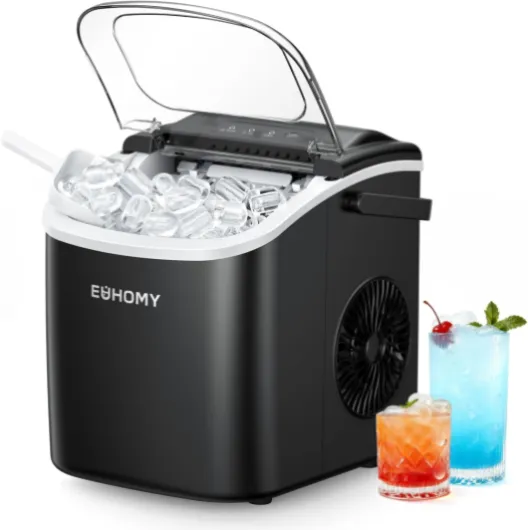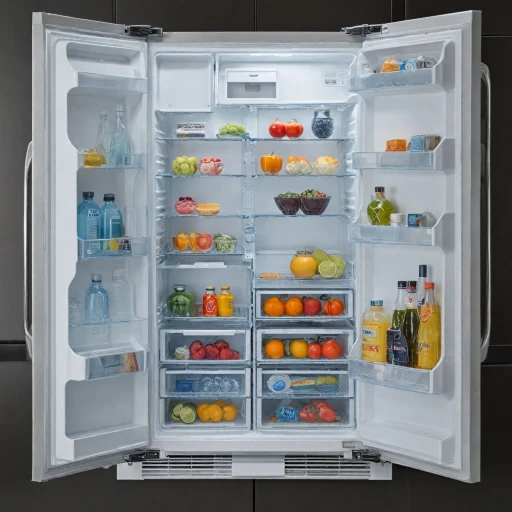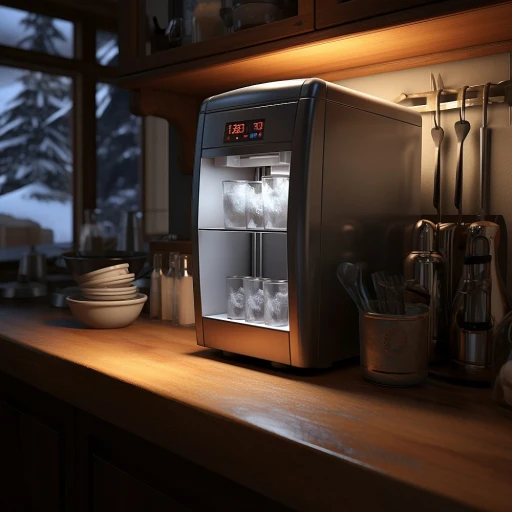
Understanding why your ice maker leaks water
Common Causes Behind Water Leaks in Ice Makers
When your ice maker starts leaking water, it can be frustrating and may even cause damage to your refrigerator or kitchen floor. Understanding why your ice machine is leaking is the first step toward a reliable repair. Several factors can contribute to water leaks, and pinpointing the source will help you resolve the issue efficiently.
- Water supply issues: If the water supply line is loose, kinked, or damaged, it can cause water to leak around your refrigerator ice maker. Always check the supply line and connections for visible leaks or drips.
- Clogged or faulty drain system: A blocked or improperly installed drain can lead to water pooling inside or beneath your ice machine. The drain system should allow excess water to flow out freely.
- Malfunctioning water inlet valve: The water inlet valve controls the flow of water into your ice maker. If it’s stuck open or not sealing properly, it may cause continuous water flow, resulting in leaks.
- Internal component problems: Issues with the fill cup, ice bin, or ice chute can also cause leaking water. Sometimes, a misaligned or cracked part inside the ice maker will allow water to escape where it shouldn’t.
- Water filter concerns: An incorrectly installed or clogged water filter can disrupt water flow, leading to leaks around the filter housing or inside the refrigerator.
Each of these causes requires a different approach to troubleshooting and repair. For a more detailed guide on diagnosing and fixing ice maker leaks, you can refer to this troubleshooting resource for ice machine issues. In the following sections, we’ll walk through how to check your water supply connections, examine the drain system, assess the water inlet valve, and inspect internal components to help you stop your ice maker from leaking water and keep your kitchen dry.
Checking water supply connections
How to Identify Issues with Water Supply Connections
When your ice maker is leaking water, one of the first areas to check is the water supply connections. A loose or damaged connection can cause leaks, leading to water pooling under your refrigerator or ice machine. Ensuring a secure and proper connection will help prevent water damage and maintain efficient ice production.
- Inspect the water line: Look for any visible cracks, kinks, or pinched areas in the water supply line. Even a small puncture can result in leaking water.
- Check the connection points: Examine where the water line connects to both the refrigerator and the wall valve. Tighten any loose fittings, but avoid over-tightening, which can damage the threads.
- Assess the fill valve: The fill valve controls water flow into the ice maker. If it’s faulty or not sealing properly, water can leak into the ice bin or onto the floor.
- Look for mineral buildup: Hard water can cause mineral deposits around the valve or fittings, leading to leaks. Cleaning these areas can help restore a proper seal.
- Test for leaks: After making adjustments, run the ice maker and observe for any signs of water escaping from the supply line or connections.
It’s also important to ensure your water filter is correctly installed and not clogged, as this can affect water flow and cause leaks. If you’re unsure about handling water supply repairs, consider contacting a professional service for help. For more detailed guidance on your specific ice maker model, you can refer to the Scotsman ice machine manual guide.
Properly checking and maintaining your water supply connections will help keep your ice makers running smoothly and reduce the risk of leaking water in the future.
Examining the ice maker’s drain system
How to Identify and Address Drainage Issues in Your Ice Maker
When your ice maker is leaking water, one of the most common causes is a problem with the drain system. Whether you own a refrigerator ice maker, a standalone ice machine, or a commercial ice maker, proper drainage is essential to avoid water damage and ensure efficient operation. Here’s how to check if your ice maker’s drain is the source of the leak and what you can do to fix it.
- Locate the drain: Most ice makers have a drain line or tube that channels excess water away from the ice bin. Check your user manual or look for a tube at the back or bottom of the machine.
- Inspect for clogs: Ice, mineral deposits, or debris can block the drain, causing water to back up and leak out of the machine. Carefully remove the drain tube and flush it with warm water to clear any obstructions.
- Check the drain pan: The drain pan collects water that melts off the ice. If the pan is cracked, misaligned, or overflowing, it can lead to leaks. Make sure the pan is properly seated and not damaged.
- Examine the drain pump (if equipped): Some ice makers, especially larger or commercial models, use a drain pump to move water out. If the pump is faulty or the hose connections are loose, leaking water may occur. Tighten connections and consider professional repair if the pump is not working.
Regularly cleaning the drain system and checking for leaks will help prevent water from pooling under your refrigerator or ice machine. If you notice persistent leaking, it may be time to call for professional service to avoid further damage to your appliance or surrounding area.
For more tips on keeping your ice maker running smoothly and enjoying the convenience of bagged ice from your ice maker, explore our detailed guides.
Assessing the water inlet valve
How to Identify Issues with the Water Inlet Valve
The water inlet valve is a crucial part of your ice maker. It controls the flow of water from your supply line into the ice machine. If your refrigerator ice maker is leaking water, the inlet valve is one of the first components you should check.- Signs of a Faulty Valve: If you notice water pooling near the back of your refrigerator or under the ice maker, the valve may be stuck open or not sealing properly. This can cause continuous water flow, leading to leaks.
- Inspect for Mineral Buildup: Over time, minerals from your water supply can clog or damage the valve. Check for white or green deposits around the valve or water line connections. This buildup can prevent the valve from closing completely, causing leaking water.
- Check for Cracks or Damage: Examine the valve and its housing for any visible cracks or signs of wear. Even a small crack can lead to a significant leak over time.
Testing the Water Inlet Valve
To test the valve, unplug your refrigerator and shut off the water supply. Remove the rear access panel and locate the valve, usually found where the water line enters the refrigerator. Disconnect the water line and look for any signs of water in the fill cup or around the valve. If water continues to drip after the supply is off, the valve is likely defective and should be replaced. If you have a water filter installed, make sure it is not clogged or improperly seated, as this can affect water flow and pressure, putting extra strain on the valve. A faulty filter can also cause leaks in the ice bin or ice chute.When to Seek Professional Repair
If you are unsure about handling electrical components or water connections, it’s best to contact a qualified service technician. They can help diagnose whether the issue is with the inlet valve, the water supply, or another internal part of your ice maker. Timely repair can prevent water damage to your kitchen and ensure your ice makers continue to operate efficiently. Regularly checking the water inlet valve and replacing it when necessary will help keep your ice machine leak-free and extend its lifespan. If you notice persistent leaks, don’t delay—addressing the problem early can save you from costly repairs down the line.Inspecting the ice maker’s internal components
Key Internal Parts to Inspect for Leaks
When your ice maker is leaking water, a close inspection of its internal components is essential. Even if the water supply, inlet valve, and drain system seem fine, hidden issues inside the ice machine can still cause leaks or water damage in your refrigerator.- Ice Bin and Fill Cup: Check the ice bin for cracks or warping. If the fill cup is misaligned or blocked, water may spill over, causing leaks inside the refrigerator ice compartment.
- Ice Chute and Dispenser: Debris or ice buildup in the ice chute can block water flow, forcing water to back up and leak. Regularly clear any obstructions to help prevent this.
- Water Filter Housing: If your ice maker has a water filter, inspect the housing and connections for leaks. A loose or damaged filter can let water escape, especially after a recent filter change or service.
- Internal Water Lines: Examine all visible water lines inside the ice maker for cracks, pinholes, or loose fittings. Even a small leak can lead to larger issues if left unchecked.
- Fill Valve and Water Inlet: The fill valve controls water flow into the ice maker. If it’s faulty or not sealing properly, water may continuously enter the machine, leading to overflow and leaks. Check for mineral buildup or corrosion around the valve and inlet area.
Preventive maintenance tips for leak-free operation
Simple Habits to Prevent Leaks in Your Ice Maker
Keeping your ice maker in top shape means fewer worries about leaking water and costly repairs. Regular care and attention can help you avoid most common issues, whether your machine is built into a refrigerator or a standalone ice machine. Here are some practical tips to help you maintain a leak-free ice maker:
- Check the water supply line regularly for any signs of wear, kinks, or loose connections. A secure and undamaged supply line helps prevent leaks before they start.
- Inspect the water inlet valve for mineral buildup or corrosion. If the valve is not sealing properly, water can leak into the ice maker or onto the floor.
- Replace the water filter as recommended by the manufacturer. A clogged filter can restrict water flow, causing the fill valve to malfunction and potentially leak.
- Clean the ice bin and ice chute to prevent blockages that can cause water to back up and overflow. Ice buildup in these areas can also lead to leaking water.
- Ensure the drain system is clear of debris and ice. A blocked drain can cause water to pool inside the machine or refrigerator, leading to leaks and possible water damage.
- Monitor the fill cup and fill valve for proper alignment and function. Misalignment can cause water to miss the ice mold and leak into the machine.
- Schedule regular service with a qualified technician, especially if you notice persistent leaks or if your ice maker is part of a commercial setup. Professional maintenance can help identify issues early and keep your machine running smoothly.
By following these preventive steps, you’ll help ensure your ice maker delivers clean, fresh ice without the headache of leaking water. Regular maintenance not only extends the life of your machine but also protects your kitchen or business from water damage. If you ever notice unusual leaks or changes in water flow, don’t hesitate to check the supply, valve, and drain systems for early signs of trouble.
-logo-retina.jpg)















